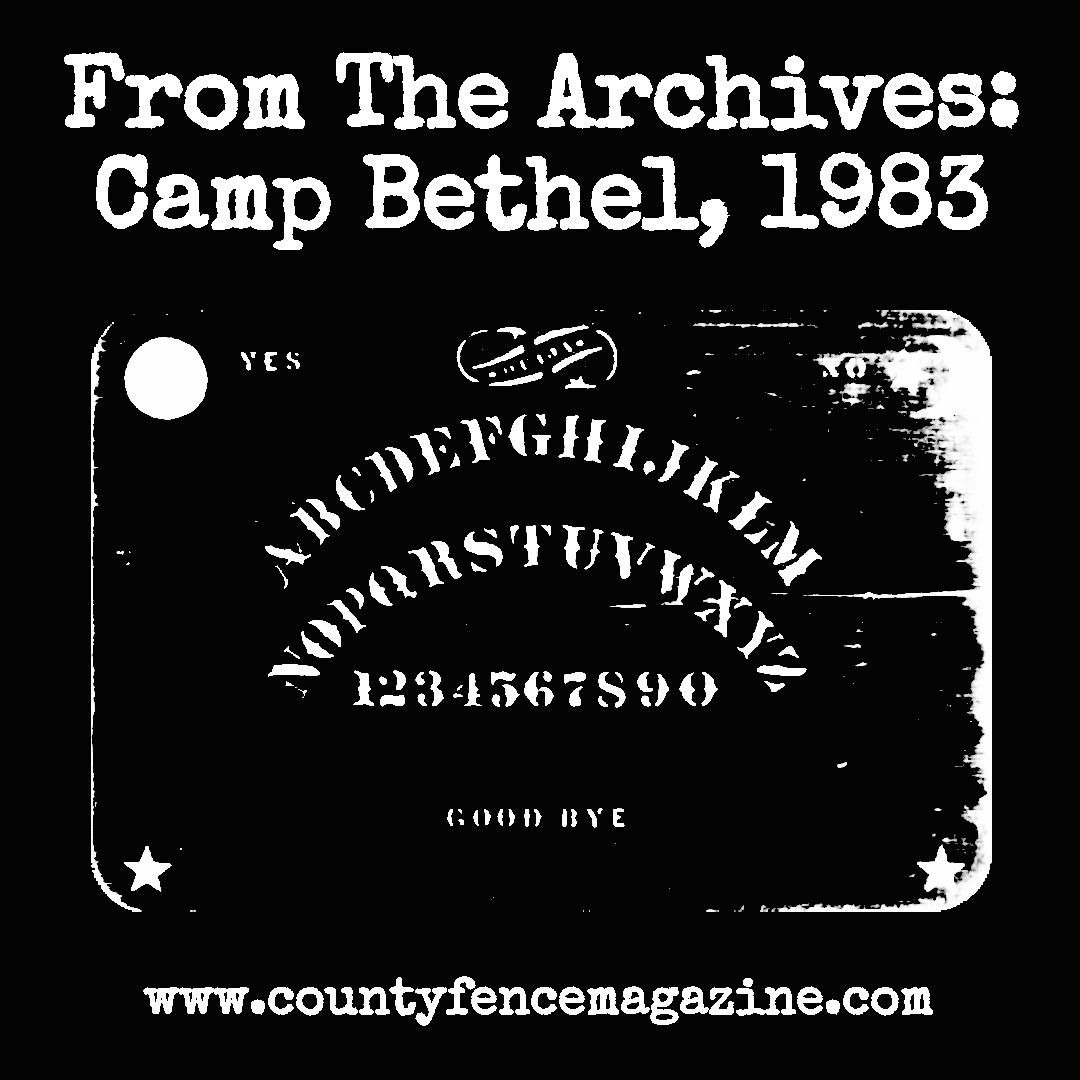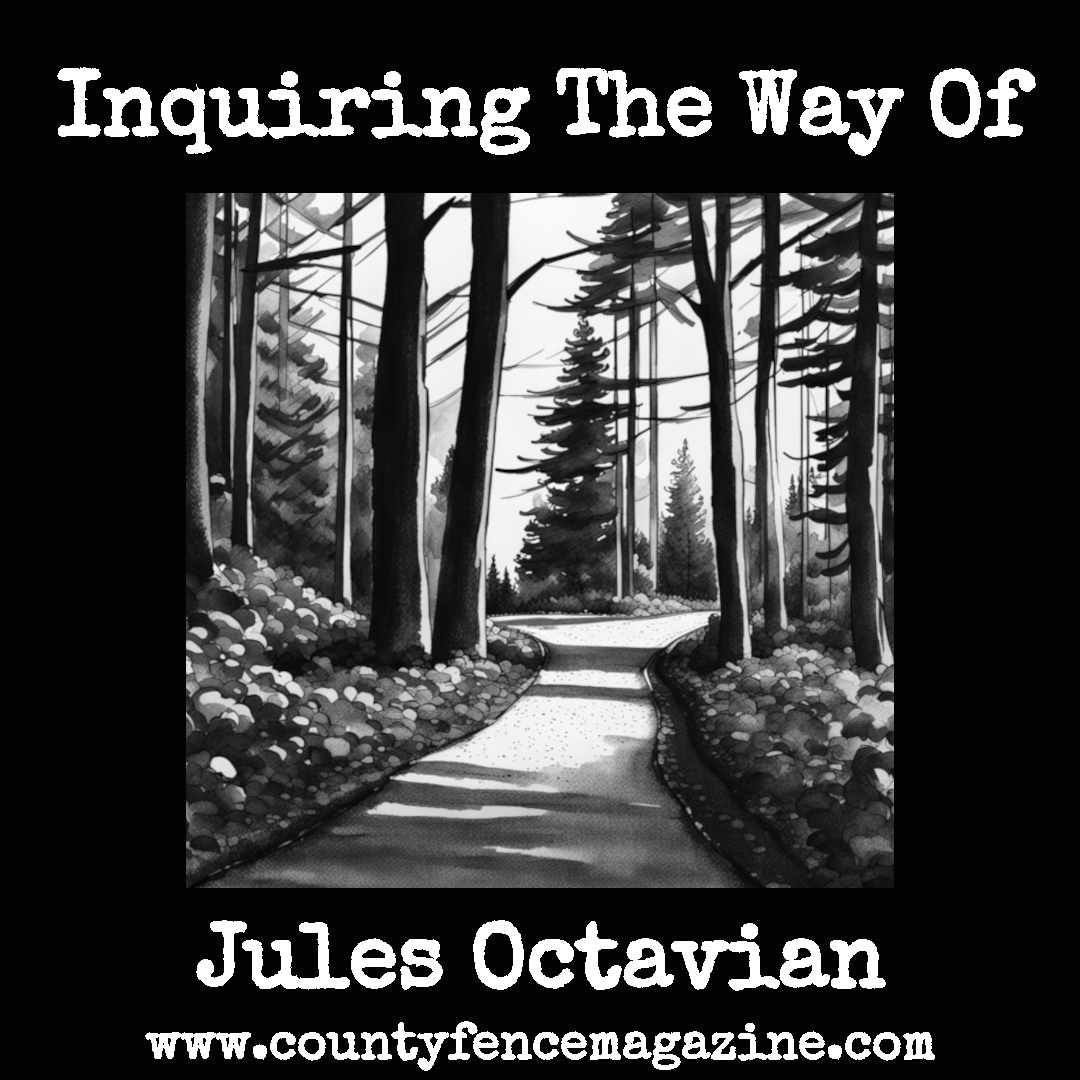
Dear Readers:
In light of our digitization program, Greg has asked that I find a piece from the archives. The following is an account of a trip that my intern and I took in 1983 and remains the most curious night of my life. Truth be told there is an all-too-easy explanation: alcohol was not the only intoxicant. At the time that was not something to put in print but enough water has flowed under the bridge that it’s no longer so important. Regardless of the substances indulged in something transformative happened that night that I have yet to make sense of and so I leave it to you, dear reader, to make of it what you will.
-Jules
—
Fall/Winter 1983
I have not considered myself a spiritual man. My mother was an avid spiritualist and so our home was the site of many meetings with other prominent ladies of the movement. My father, like many men of his time and stature, sat on various national boards within the United Church of Canada. We were, to say the least, a religious household yet a rather unusual one. In the end, neither tradition spoke truth to me and I pursued my own path, which was decidedly secular.
However, as I have eased into middle-age there are things I simply cannot explain. I do not mean to say that there are not or will never be explanations of these phenomena. I am quite comfortable with the idea that the scientific process is a resource-intensive one and that the universe is an incalculably large and diverse place. One day there will be an explanation, however it may take quite some time. Religion, then, is the way man has wrestled with this unknown. Despite my religious leanings, or lack thereof, ignorance is not an excuse for inaction and man has resolutely marched forward through time with the help of mystics, priests, and prophets.
—
The sunrise one Saturday morning some weeks ago was a loud warning to sailors, that is astonishingly red, but truly beautiful to those of us sticking to the land. Jeremy and I enjoyed coffee on my deck overlooking the river before joining the farmers at our local diner for a good feed and an update on the gossip. Alas – I do not remember whether it had been too dry or too wet for fall chores but the bluejays remained bullies and there was speculation as to an inter-office romance at the milk board. For our purposes we could not have asked for better on that clear late October morning.
It took two careful hours on back roads in the Alpha to reach our trailhead which was halfway down a half-abandoned road. The trail, of course, was the other half and almost entirely returned to the forest. Our path marked only by the gap where the road surface had yet loosen sufficiently for cone and key to take root. An ancient rail fence meandered along one side and the smell of fall leaves filled the air.
Before settlement the aboriginals would have seen old-growth forests of hemlock, yellow birch, and maple covering a landscape shaped only by glaciers. Early settlers would have seen the same but I imagine the scale of the project ahead and sense of isolation would have made them reassess leaving Europe. A few years later the scene would have been apocalyptic: mud and stumps to the horizon, land cleared by teams of strong men and horses for lumber to build the rapidly expanding new colony. In those early days even roads were often made of log and plank, not to mention the homes and businesses going up by the thousands. On this day we beheld the second or third generation of a new forest: cedar and poplar having lived and died to create an environment for pines, hemlocks, birch, and the odd maple to reach for the sun. This land has little use today – denuded of it’s lumber stocks, far too rocky for agriculture, and sufficiently remote to prevent commuting to any kind of meaningful work. A landscape extraordinarily well-suited for retreats, cottages, and camps but rendered nearly worthless by the sheer supply.
The camp we sought out was one of many that might have better resembled villages where children and wives were welcome along-side the ubiquitous Canadian lumberjack. Canada is famous for company towns with a few, such as our very own Batawa, still clinging to life. However this camp had long returned to the forest. Piles of spongy lumber and mossy stone foundations where the mill, mess hall, bunk houses, and church once stood. Counter to the rough and tumble reputation of Canada’s early lumber industry, this camp was decidedly different.
The early days of this colony’s settlement were difficult for most but an unparalleled opportunity for some. For those of higher social rank the colonies were an exile. Those of lower social rank were economic refugees and faced the hardships refugees always do. For a select few in the middle, however, it was complete freedom. Land was surveyed and parcelled out with military precision and those with more than a little bit of money could invest and live in luxury and privacy. In those days these were often as not men with theological goals in addition to their political or commercial aspirations and the company town was seen as a canvas on which to showcase one’s ability. Some towns could have easily been mistaken for the Wild West but others were built on Christian utopian ideals.
Abraham Hawley was the son of a hotelier who leveraged his family’s wealth to enter the lumber industry. From there he invested in pulp and paper, the burgeoning newspaper industry, and later politics. Like other powerful men of those days, he was deeply religious. A devout Quaker, he was a firm believer in “the light within” or the belief that God works within individual people. Hawley’s challenge during his lumbering years was that, as my friend Al Purdy said in his poem “Country North of Belleville,” there were none to deny his inner light for miles.
On the surface Camp Bethel is not unlike many of the other camps and boom towns of the area: the lost-gamble of a moderately wealthy man looking to make a name for himself, now a shadow of what it once was. However there is a rumour that Camp Bethel was selected for it’s spiritual significance as much as it’s standing timber. It is, as the Celts used to say, a so-called “thin place.” In Celtic lore heaven and earth are only a few feet apart but there are thinner places where that distance is much less. This was not lost on the Scots-Irish pioneers who flocked to this part of the world nor was it lost on our aboriginal friends. While there is little evidence of aboriginal settlement prior to Camp Bethel it appears that it was a place of religious pilgrimage, perhaps akin to the Roman shrines and temples that were often erected in supposed thin places across Europe. Not only was Hawley looking for a place to make a name for himself, he was also looking for a thin place away from prying eyes.
Little is written on Hawley like little is written on many of the lesser leading men of the era. There was an investment boom in a brand-new sector with little to no regulation. Hawley wasn’t the T. Boone Pickens or Steve Jobs of the day, he was among the many who look to men like these for inspiration. Important enough for there to be record of his life and work but not enough for there to be much. Perhaps that is how he preferred it, at least for this first endeavour of his.
The most curious thing about Camp Bethel is the fire-pit and artesian well in what an optimist might call the town square. These camps were built cheaply and quickly, often with the knowledge that they would not last, and the ruins around us acknowledged this fact. However in the centre of town is the most curious structure: a well-cut limestone masonry platform about twelve feet square with a symmetrical trough on either side. One contained some ashes and charcoal, the other continuously overflowed with water from a passage below. Despite the decay of the rest of the camp, this structure looked almost new and in fact neither of us thought twice about drinking the sweet cold water. The end of October being a chilly time of year we wasted no time building a fire and, given the ash and charcoal, the most logical place seemed the opposite trough. Then we set about striking camp.
Our first day was for investigation. We scoured the camp and forest surrounding it for clues as to what Mr. Hawley had been up to. We came up with little aside from the limestone structure to differentiate it from the countless other abandoned settlements in this part of the world. Ultimately we gave up in favour of some lovely thick steaks, potatoes, and rye whisky.
Truth be told, the second day began a little slowly but campfire coffee seemed to motivate Jeremy more than myself, who was at a loss as to how to investigate the site any further. It may seem odd to find a structure like this in an old lumber camp with vague whispers surrounding it. However it is less uncommon than you might think when wealthy eccentrics and their delusions of grandeur have a workforce at their disposal deep in the forest. This is evidenced by the lack of archaeological investment in our area – it’s just not that unique. Regardless, I was happy to spend a few days in the woods with someone who had become a very close friend. That close friend, however, would not be deterred.
Jeremy began the day with a morning of yoga — an eastern spiritual tradition of meditative stretching and movements — he said to sharpen his senses and receptivity to the energy of the site. It is not a tradition I have had much exposure to but after watching him stretch and twist I began to see the benefit and joined in. When he said he felt present enough, Jeremy then removed his shoes and socks before methodically pacing the site. He claimed he was feeling for some kind of energy. I suggested he was feeling for tetanus, began working on lunch, and opened the rye.
In the afternoon Jeremy began placing rocks and other objects found on the site in various seemingly arbitrary spots. I told him that his feet must have been freezing but he had concluded it was an important part of the process. When I asked what process, he replied that he didn’t know either. To say that I was skeptical would be an understatement.
By nightfall he had collected quite a few objects, some from his own pack, and many of them were now arranged on the platform. We built that night’s fire large and the sky was clear with stars stretching to infinity in the way only a crisp fall sky this far from civilization allows. Aside from the crackle of the fire, its echos on the trees, and the trickling water it was completely silent and the thoughts seemed to melt from my head. This moment was Eastern Ontario at it’s finest and I was determined to enjoy it despite my respected colleague loosing his mind.
A little annoyed with the lack of companionship, around midnight I muttered that I should have brought my mother’s talking board. Despite my sarcasm Jeremy agreed enthusiastically and after thinking for a moment began scraping the alphabet into the rock using a burnt stick. My skepticism was overridden by practicality when I decided it would be faster to fail than protest and we began the divination process. Yet, by trick or by truth, the following message emerged: “SWIM.”
This was the end of October. Nights were often below freezing and flurries possible: in other words the river was hypothermic. I refused and so Jeremy suggested we ask again. This time the message was clear: “SWIM NOW.”
The two of us simply stared at each other for a moment before Jeremy began tearing off his clothes. I yelled for him to stop but when he looked back at me I knew what I had to do and followed suit.
The water was absolutely shocking, momentum being the only thing able to carry me into it. It felt as though the wind had been knocked out of me. Yet as soon as my head hit the water I heard it: voices. Hundreds of them. Hardly able to stand the water I pulled my head out and heard silence. When I submerged myself once again the voices continued. Then it grew quiet and one raspy voice rang out: “free the goddess.”
The next thing I knew I was waking up next to the fire in my sleeping bag, Jeremy holding me for warmth and trying to wake me up. When I told him what happened he said he heard the same.
This article is, to say the least, not our usual fare here at County Fence Bi-Annual. We struggled with whether to share this experience or not. The mind is a fickle thing and neither of us can find an explanation for our experience. But as the days have gone on and we have discussed it, our resolve has only become firmer. We are at a loss as to what to do with such a story. So we write. Perhaps you can make sense of what we cannot. Adieu.
-Jules




